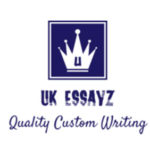COMM 205: Writing for the Media
Week 4
Traditional non-fiction form
a more creative form of storytelling
designed to entertain as well as inform
use the writing techniques of fiction
human interest is key
Three sections of features
Lede (pron: lead)
must be crafted to lure readers and make them want to learn more
Middle
must hold their interest, while leading to an ending
Ending
just as important as lede
Structure of feature articles
lede should contain best material
can be anecdote, descriptive scene
Wall Street Journals diamond style
start with anecdote to get into story
then comes topic with 5Ws, theme
ending can be open or closed
but all key questions must be answered
Tip: Draft an outline
even the simplest outline can save you writing time
simply write down the major points of your story from start to finish
to remind yourself of what goes where
try juggling this list on your computer
cut and paste until the story is balanced
and the order seems right
Components of a feature story
Primary sources
ie. interview material
attributed accordingly
direct and indirect quotes
Secondary sources
background material
gained from research
must also be attributed
Basic interviewing principles
Preparation there is no substitute
let them know that you know something
Establish rapport
Ask relevant questions
have a few prepared. . . .
4. Listen and talk attentively
non-verbal cues important
Types of interviews
Telephone interviews
Sit-down, Q&A, taped interviews in the field or studio
Digital interviews via Skype, ZOOM etc.
Streeters
On the record or off?
Dont agree to go off the record
Everything is on the record.
Tricks of the trade
Save the tough questions until last
in case the interview ends . . . suddenly
make sure you ask everything else first.
Confirming quotes
Interview subjects do not get to approve or see your work before broadcast or publication.
But, you may agree to check facts with them
